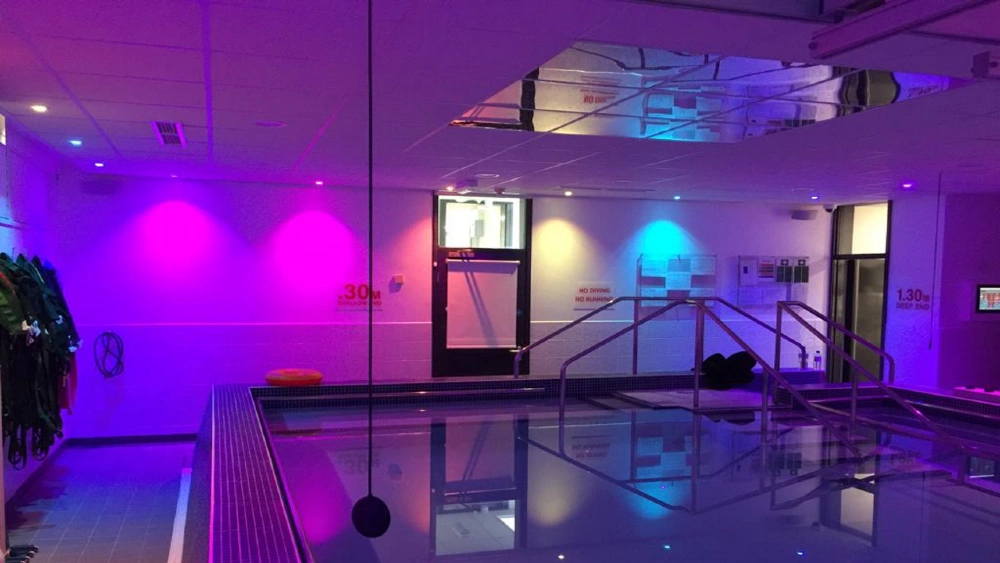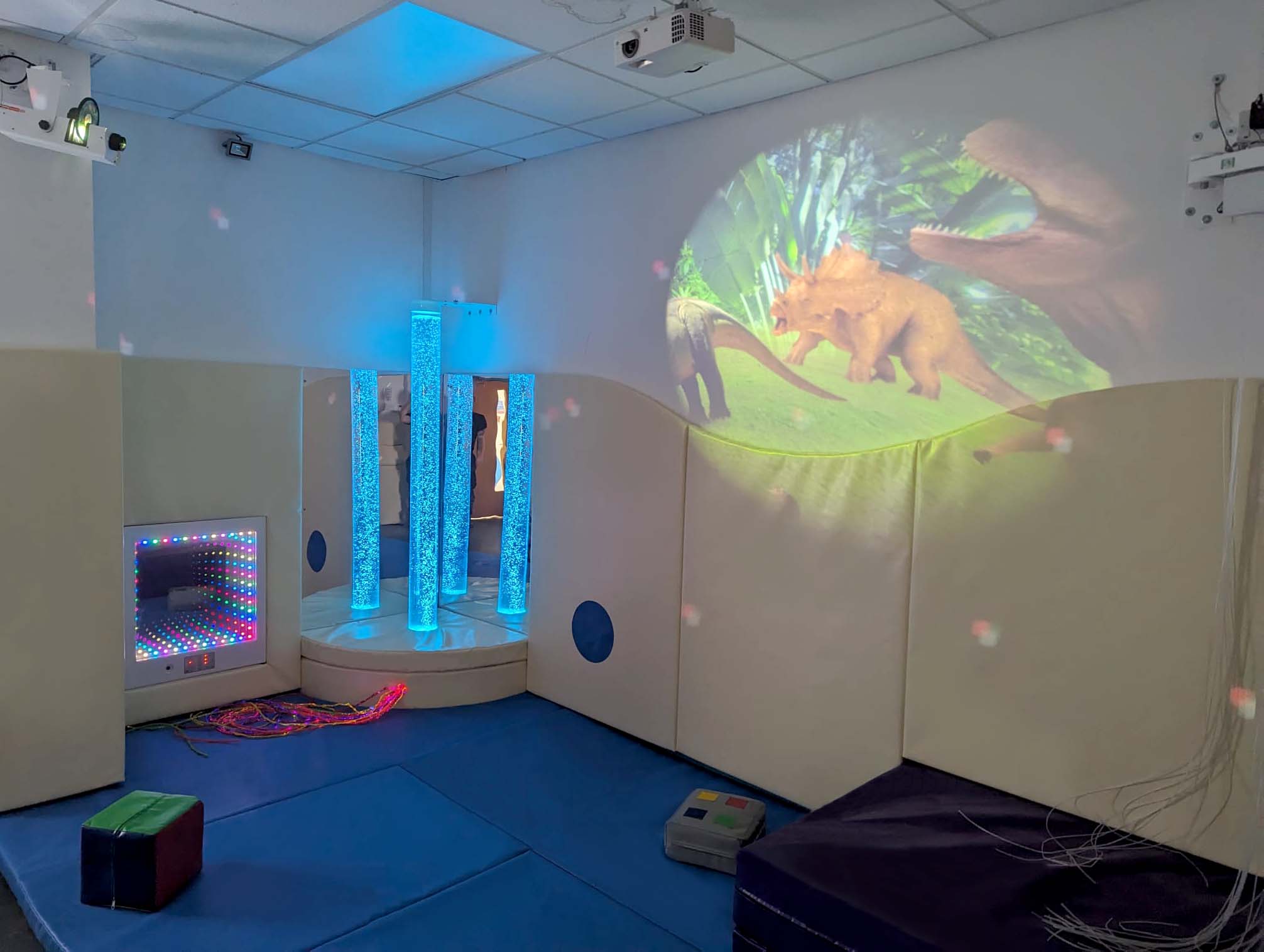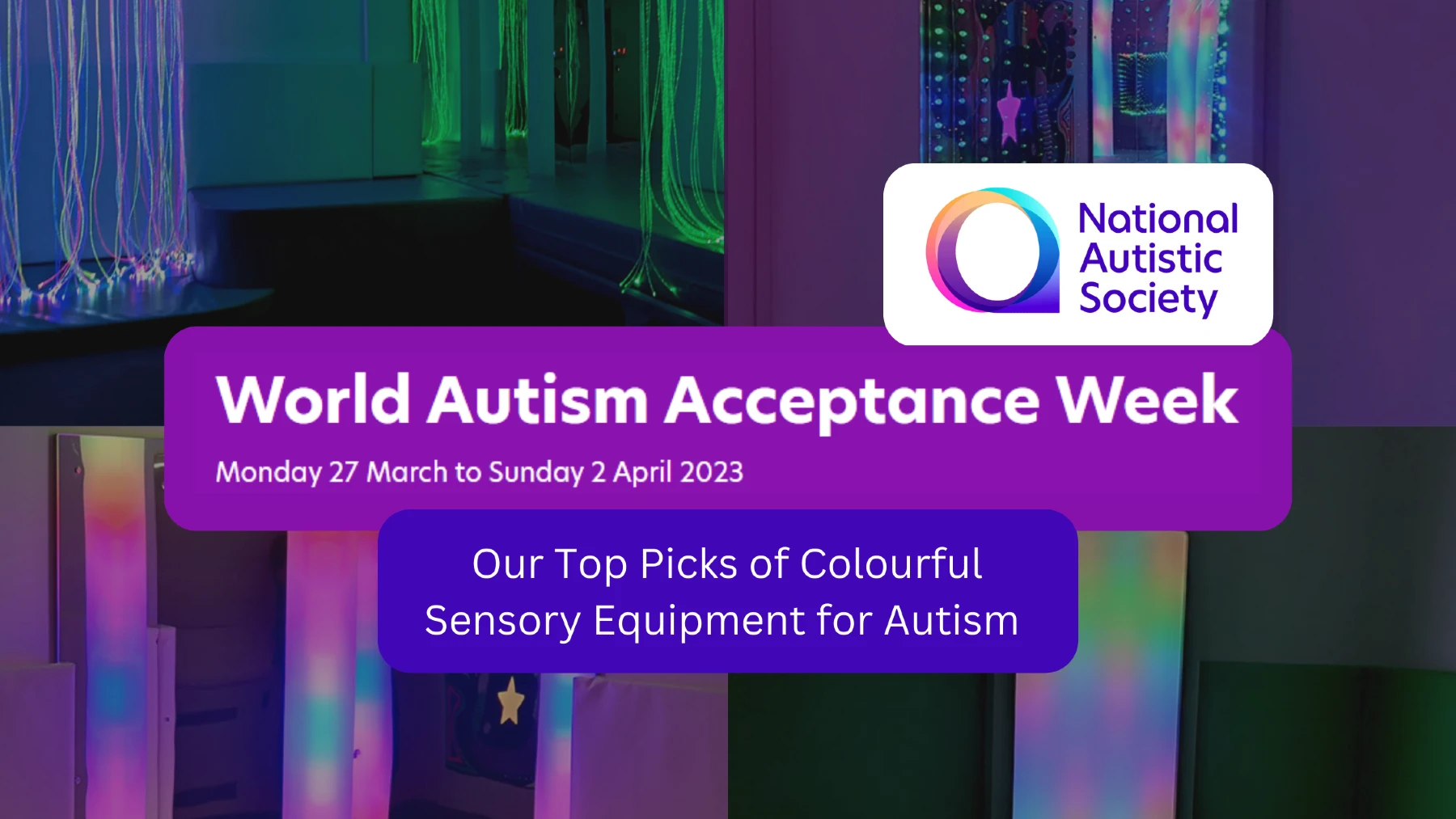You might be wondering, what are the differences between a normal swimming pool and a sensory swimming pool? Luckily, we’re here to help!
We’ll go through the key features of our sensory pools and how they differ from your average pool.
Sensory pools offer a fun and relaxing environment for users of all ages. We take great care in designing sensory pools that combine interactive features, accessibility, and therapeutic benefits, making them perfect for individuals with sensory processing needs, disabilities, or those simply looking for a calming water experience. Sensory pool settings can commonly be found anywhere from schools and public leisure centres, to domestic residencies for occupational purposes.
Interactive Colour-Changing Lighting
We’ve all gone to a typical swimming pool, which relies on simple overhead lighting for visibility, but a sensory pool turns lighting into an interactive feature. Colour-changing LED lights transform the pool into an oasis and an exciting visual experience. Unlike static pool lighting, fibre optics and UV lighting create immersive, high-contrast visuals that bring a whole new experience to swimming.
With customisable colours, a sensory pool can transition between calm blues and greens for relaxation or vibrant reds and purples for an energising effect. The ability to control lighting allows every user to tailor their experience to their comfort levels.
Not only can colour-changing mood lighting have effects on the walls and water, it can also be installed to colour wash the ceiling too. As the mobility of users may vary depending on their needs and abilities, those who are limited to lying on their backs can also enjoy the interactive visual effects, making it accessible for everyone.
Water Movement
Unlike a common swimming pool, where water is mostly passive, a sensory pool invites users to engage with its movement, offering both relaxing and fun experiences in a safely controlled setting.
Sensory swimming pools, however, make water movement an integral part of the experience. Portable Bubble Blowers can be added into the pool to generate bubbles for users to feel and enjoy. This is particularly beneficial for users with visual impairments, who can experience the vibration of the bubbles in the water.
Movement related games can also be incorporated into sensory swimming pools through interactive devices and interactive software control systems. Placing cubes and switches in the pool can encourage users to move them with the reward of colour changes. Colours can be used with the interactive software control system to direct users to different sides of the pool, depending on the colour of each wall – another fun way to not only encourage movement but as an educational tool also.
Creating an Immersive Sound Experience
Most public pools can be noisy, with echoes bouncing off the walls, making it difficult to focus or relax. A sensory swimming pool introduces a different kind of auditory experience by carefully integrating sound systems to create a more peaceful atmosphere.
Instead of background noise, sensory pools can play calming music, rhythmic water sounds, or even interactive audio for classes! The addition of waterproof speakers allows for underwater sounds, creating a multi-layered environment that makes the pool experience more engaging. This feature is especially helpful for individuals who benefit from rhythmic stimulation or struggle with auditory processing in noisy environments.
Temperature Control
The majority of standard swimming pools often have a fixed temperature setting, which can make it difficult to cater to multiple needs. Hydrotherapy pools offer temperature control, which is especially beneficial for users with special needs. Warmer water can help ease muscle tension and promote calmness, while slightly cooler temperatures can stimulate alertness for swimming lessons or playtime.
Interactive Sensory Pool Equipment
Pool equipment, such as floating aids, are mainly used for safety or swim training. In a sensory swimming pool, they become an essential part of the experience. Buoyancy aids like floating mats and rafts encourage movement and exploration without the pressure of structured swimming. Interactive elements such as cube switches or hand switches (seen in the images below) are also a perfect addition, allowing users to create fun games, and making water-based activities more engaging, accessible and developmental.
Bringing the Pool to Life with Visual Effects
Most pools have simple tiled floors and clear water, but sensory pools use projection technology to create an amazing experience. Moving patterns, nature scenes, and interactive visuals can be displayed on the water’s surface or surrounding walls and ceilings, immersing users in a unique environment.
Unlike traditional pools, where the water remains unchanged, a sensory pool can adapt its visuals to provide everything from an underwater adventure to a calming and starry night sky. These dynamic effects can make the space more inviting and stimulating for those who benefit from visual elements to develop.
Sensory Pool Safety
A key feature that is considered throughout all of the design process and the equipment / features included is safety. As with all sensory spaces, safety is key in ensuring that all users accessing the space are able to enjoy and explore the sensory features without any risks or dangers, especially within pool environments when the main risk is water and electrical features.
To ensure that we are maintaining a high level of safety throughout our practice and installations, our expert team of engineers are up-to-date with the latest training and certifications – including our recent renewal of our NICEIC certification, which is the UK’s leading certification body for the electrical contracting industry, allowing us to safely and legally carry out electrical installations.
The products included are specified to not only fit with the goals of the space, but to comply with the relevant guidelines and ensure longevity.
Creating Your Sensory Pool
Now you know the details, it’s clear that a sensory swimming pool can redefine the way people experience water. Going beyond the standard swim-and-splash model to create an environment where relaxation, stimulation, and accessibility come together!
At Sensory Technology, we specialise in designing & installing sensory pools that bring people together. If you’re considering a sensory swimming pool, contact us today to learn more about our bespoke designs and how we can create the perfect space for your needs.








